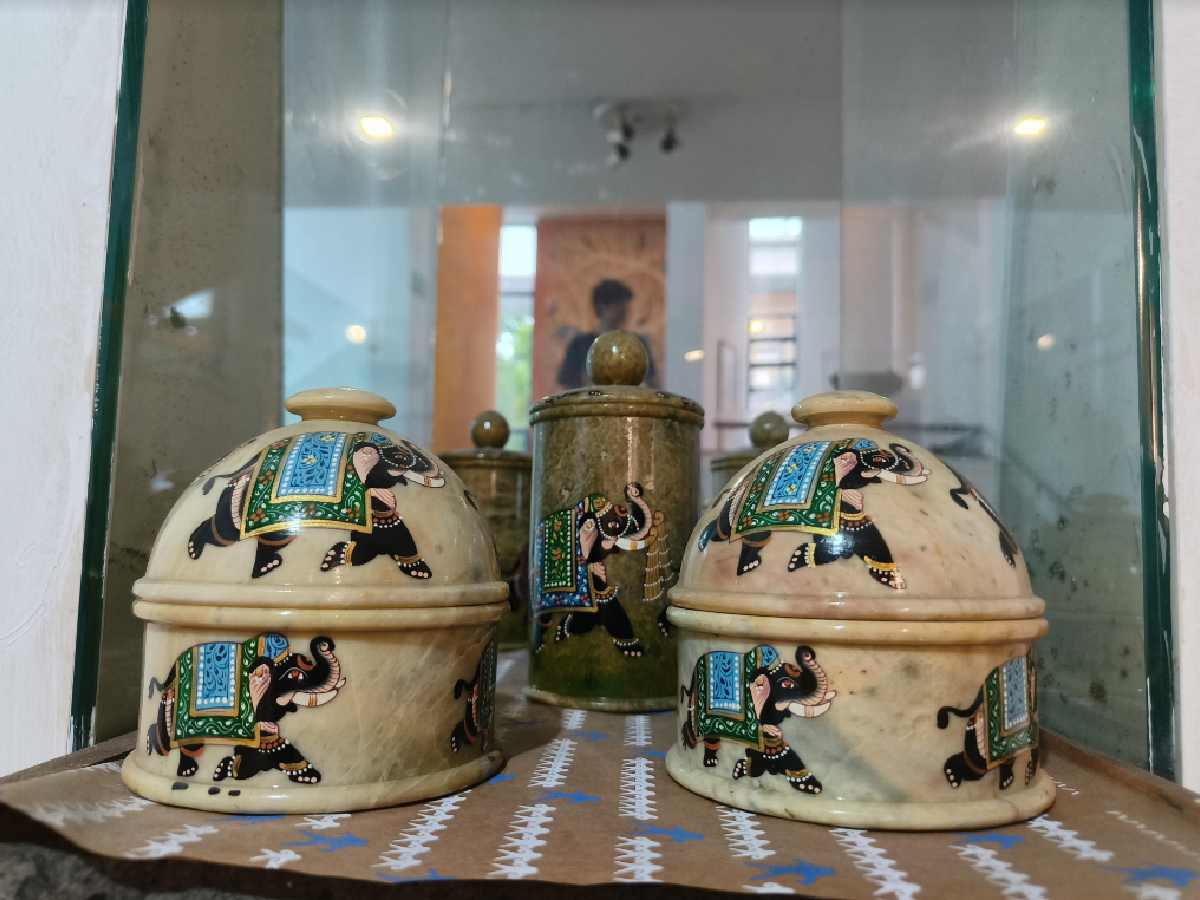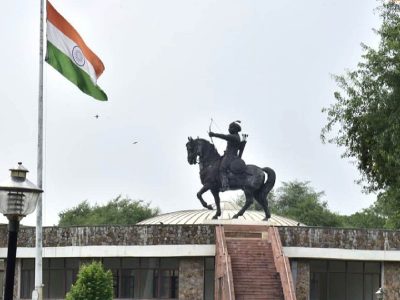Delhi: From Agra’s handcrafted stone products to West Bengal’s glass-beaded necklaces, Kashmir’s Pashmina, and Karnataka’s Bidriware, the Indian National Trust for Art and Cultural Heritage (INTACH) has been working quietly yet resolutely to preserve the nation’s rich tapestry of traditional crafts.
In a world dominated by mass production, traditional crafts are at risk of fading away. A Delhi-based non-profit, INTACH aims to ensure these rich traditions endure.
Its Heritage Crafts Cell, founded in the early 1980s, has become a beacon of hope for artisans struggling to keep their crafts alive.
The cell’s mission is to support and revive traditional crafts on the brink of extinction.
Their work spans the country, covering a wide range of crafts, from Odisha’s intricate Dokra earrings and Aligarh’s brass diyas to Karnataka’s Bidriware, Azamgarh’s clay pottery, Delhi’s textiles, and West Bengal’s hand-painted boxes, among others.
Also read: Delhi: Heatwave, rains cause drop in footfall at historic monuments
Empowering artisans
A key mission of the Heritage Crafts Cell is to empower artisans by providing them platforms to showcase their work. The cell organises exhibitions, trade fairs, and online showcases, helping artisans connect with broader audiences.
Through these initiatives, traditional crafts have discovered new markets and gained renewed appreciation from both domestic and international customers. Additionally, the cell plays a vital role in helping artisans navigate the complexities of modern commerce.
By facilitating connections with retailers and online platforms, the organisation ensures that artisans not only continue producing their crafts but also succeed in selling them in competitive markets.
“They have given wings to our dreams. We’ve learned so much from them, and our dying art is gaining broader recognition,” said Abdul Rasheed, a Pashmina artisan from Srinagar.
Training and development
Beyond promotion and sales, INTACH’s Heritage Crafts Cell is deeply committed to the skill development of artisans.
The cell conducts regular training workshops, covering everything from advanced traditional techniques to contemporary business practices.
These workshops not only help artisans refine their craft but also equip them with the tools to thrive in today’s competitive market.
According to an INTACH official, recent workshops have focused on integrating modern design trends with traditional techniques, allowing artisans to create products that appeal to contemporary tastes while preserving cultural authenticity.
“Additionally, sessions on digital marketing and e-commerce are helping artisans tap into online marketplaces, which have become increasingly important in the global economy,” said Rasheed.
A collective effort
The impact of the Heritage Crafts Cell extends beyond individual artisans. By fostering a sense of community and collaboration, the cell has helped build networks where artisans can share knowledge, resources, and support.
This communal approach strengthens the craft sector and aids in preserving the traditional techniques that are central to India’s cultural heritage.
Pankaj Kumar, an artisan from Delhi, reflects on the transformation: “Before, it was difficult to find buyers and sustain our craft. Now, we not only have opportunities to showcase our work but also receive training that helps us adapt to modern demands without losing our traditional touch.”
Also read: Delhi: Gole Dak Khana’s director’s residence set to be restored
Looking ahead
The work of the Heritage Crafts Cell has never been more crucial. Its efforts go beyond preserving the past; they aim to ensure that India’s rich tradition of arts can thrive today and in the future.
Through its dedicated initiatives, the organisation is keeping India’s cultural heritage vibrant and relevant, passing down the stories and skills of the past to future generations.
“In a world where the past often seems overshadowed by rapid modernisation, INTACH’s Heritage Crafts Cell stands as a reminder of the beauty and value of traditional arts, demonstrating that even in the digital age, there is still a place for time honoured craftsmanship and cultural heritage,” an INTACH official noted.




